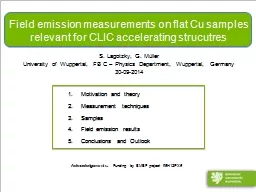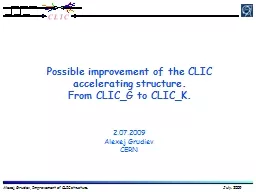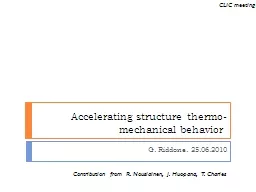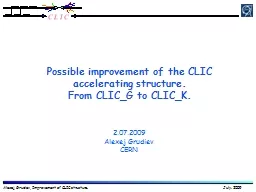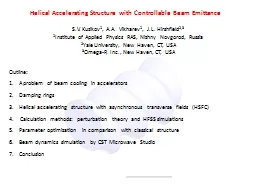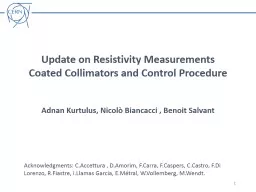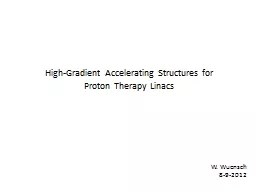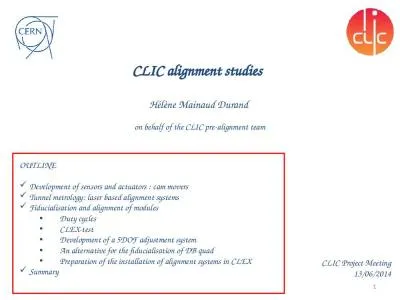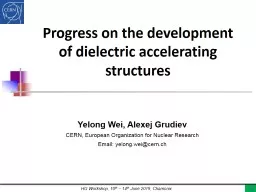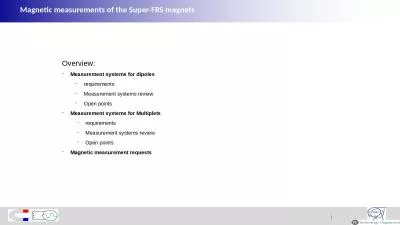PPT-Field emission measurements on flat Cu samples relevant for CLIC accelerating
Author : patchick | Published Date : 2020-06-19
strucutres S Lagotzky G Müller University of Wuppertal FB C Physics Department Wuppertal Germany 30092014 Motivation and theory Measurement techniques Samples
Presentation Embed Code
Download Presentation
Download Presentation The PPT/PDF document "Field emission measurements on flat Cu s..." is the property of its rightful owner. Permission is granted to download and print the materials on this website for personal, non-commercial use only, and to display it on your personal computer provided you do not modify the materials and that you retain all copyright notices contained in the materials. By downloading content from our website, you accept the terms of this agreement.
Field emission measurements on flat Cu samples relevant for CLIC accelerating: Transcript
Download Rules Of Document
"Field emission measurements on flat Cu samples relevant for CLIC accelerating"The content belongs to its owner. You may download and print it for personal use, without modification, and keep all copyright notices. By downloading, you agree to these terms.
Related Documents

